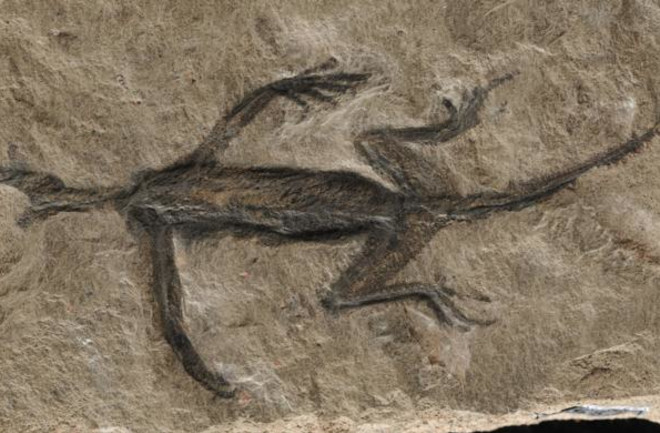An ancient lizard fossil, renowned for its remarkable preservation and older than the dinosaurs, might be a partial forgery. The fossil, known as, Tridentinosaurus antiquus, was found in Italy in 1931, and was used to pinpoint evolution in early reptiles. However, an analysis published in Palaeontology found that the fossil’s preserved black outline is not skin, but paint.
“The peculiar preservation of Tridentinosaurus had puzzled experts for decades. Now, it all makes sense. What it was described as carbonized skin, is just paint,” said Evelyn Kustatscher, study co-author and curator at the Museum of Nature South Tyrol, in a press release.
A Mysterious Ancient Lizard Fossil
Prior to the study, paleontologists thought the fossil’s outline was carbonized skin and that volcanic ash preserved the T. antiquus. Despite various articles that described the fossil, it wasn’t analyzed in detail. It’s strange preservation had scientists puzzled about what reptile group the fossil fell in.
Tissues preserved in rock can reveal information like the anatomy of the reptile, its physiology, and its skin coloration. However, when the researchers of the study looked at the fossil in detail, they found that its texture did not match that of real preserved tissue.
The team used microscopy and UV photography to find that the black outline was not fossilized skin, but a type of painted coating. In the past, slathering fossils with a type of varnish was a usual step in the preservation process and was done so the fossil could be fully preserved for many years inside museum archives. Some institutions use this method to keep fossils in great shape.
Read More: What Are Fossils and Where Are They Found the Most?
Is the T. antiquus Fossil Fake?
Still, the researchers hoped that underneath the paint, the organic tissues would still be there to analyze. Scientists found hindlimb bones, and the reptile’s femurs. All are suspected to be genuine, but they were not well preserved. A closer look at the fossil also revealed tiny scales called osteoderms, which are similar to those found on the back of a crocodile.
Overall, the team found that the fossil was coated in paint to enhance the look of the fossil shape. But, the paint misled scientists into thinking it was a type of skin. But not all was lost, and the fossil was considered only a partial forgery. The authors note that caution should be used when working with T. antiquus.
Read More: What Are the Oldest Fossils in the World?
Article Sources
Our writers at Discovermagazine.com use peer-reviewed studies and high-quality sources for our articles, and our editors review them for accuracy and trustworthiness. Review the sources used below for this article:
Palaeontology. Forged soft tissues revealed in the oldest fossil reptile from the early Permian of the Alps.

